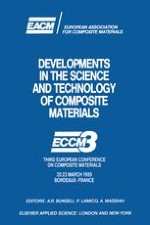1989 | Buch
Developments in the Science and Technology of Composite Materials
ECCM3 Third European Conference on Composite Materials 20.23 March 1989 Bordeaux-France
herausgegeben von: A. R. Bunsell, P. Lamicq, A. Massiah
Verlag: Springer Netherlands
Enthalten in: Professional Book Archive
